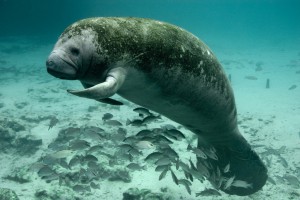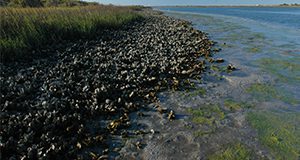This 9-page document is the ninth lesson in the Cetaceans 4th Grade Curriculum. It will help students investigate the roles that blubber, body shape, and body size play in preventing heat loss in marine mammals. Written by Maia Patterson McGuire and Ruth Francis-Floyd, and published by the UF/IFAS Veterinary Medicine–Large Animal Clinical Sciences Department, June 2019.
http://edis.ifas.ufl.edu/vm234
Tag: Marine Wildlife
Third Grade Manatee Curriculum

This 19 fact sheet curriculum series provides a series of individual lessons covering manatee biology and ecology, as well as highlighting some of the ways that humans impact and can protect manatees. The curriculum has been written at a third grade level but can be adapted for older or younger students. (Photo credit: Keith Ramos, USFWS)
http://edis.ifas.ufl.edu/topic_series_third_grade_manatee_workbook
Goliath Grouper: Giant of the Reef (SGEF179/SG103)
 Management of the goliath grouper, the largest member of the seabass family, has become an intensely debated issue in recent years. This 5-page fact sheet provides factual information on the biology and ecology of goliath grouper relevant to these issues. Written by John Stevely and Bryan Fluech and published by the UF Department of Sea Grant, September 2011.
Management of the goliath grouper, the largest member of the seabass family, has become an intensely debated issue in recent years. This 5-page fact sheet provides factual information on the biology and ecology of goliath grouper relevant to these issues. Written by John Stevely and Bryan Fluech and published by the UF Department of Sea Grant, September 2011.
http://edis.ifas.ufl.edu/sg103
